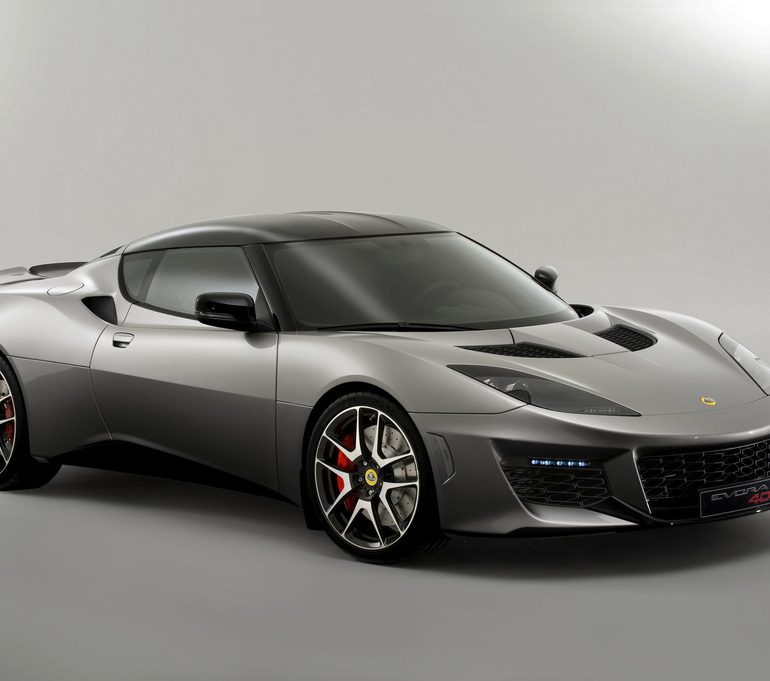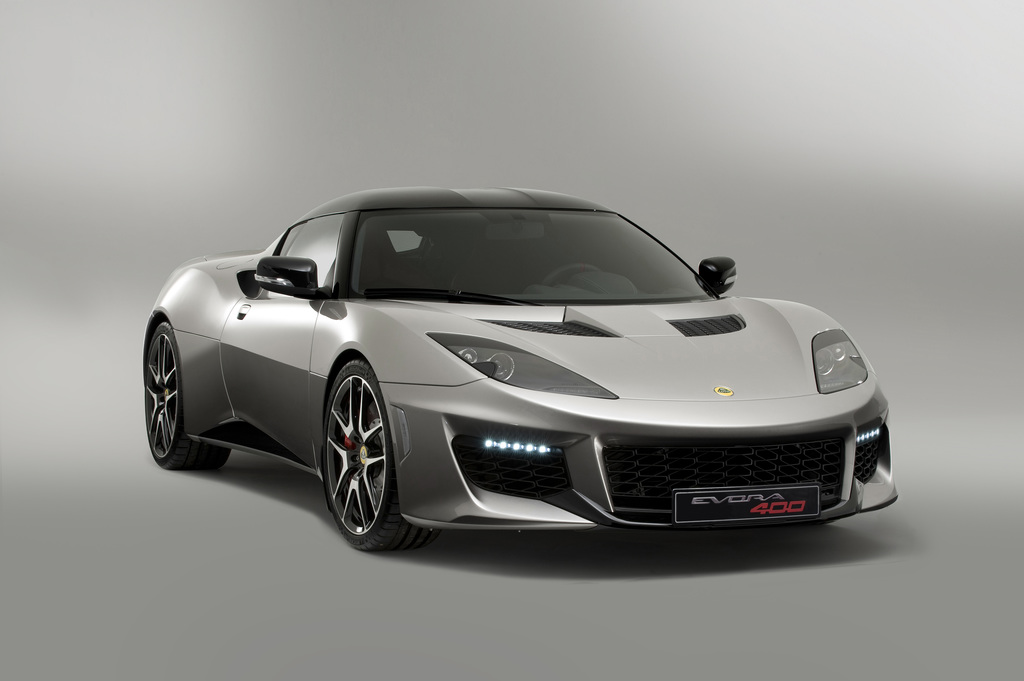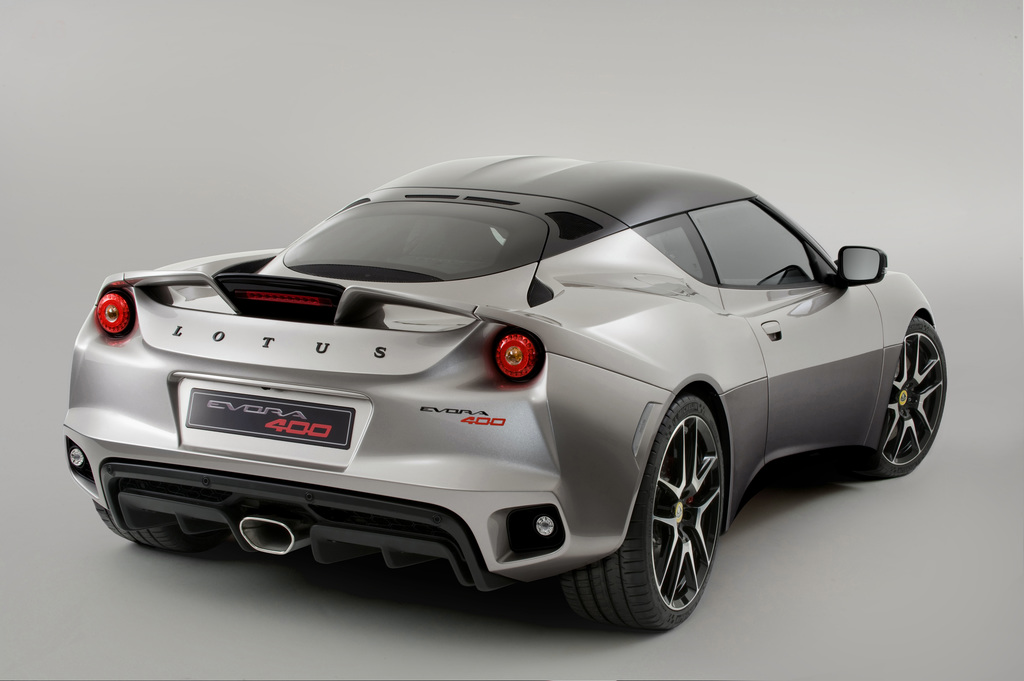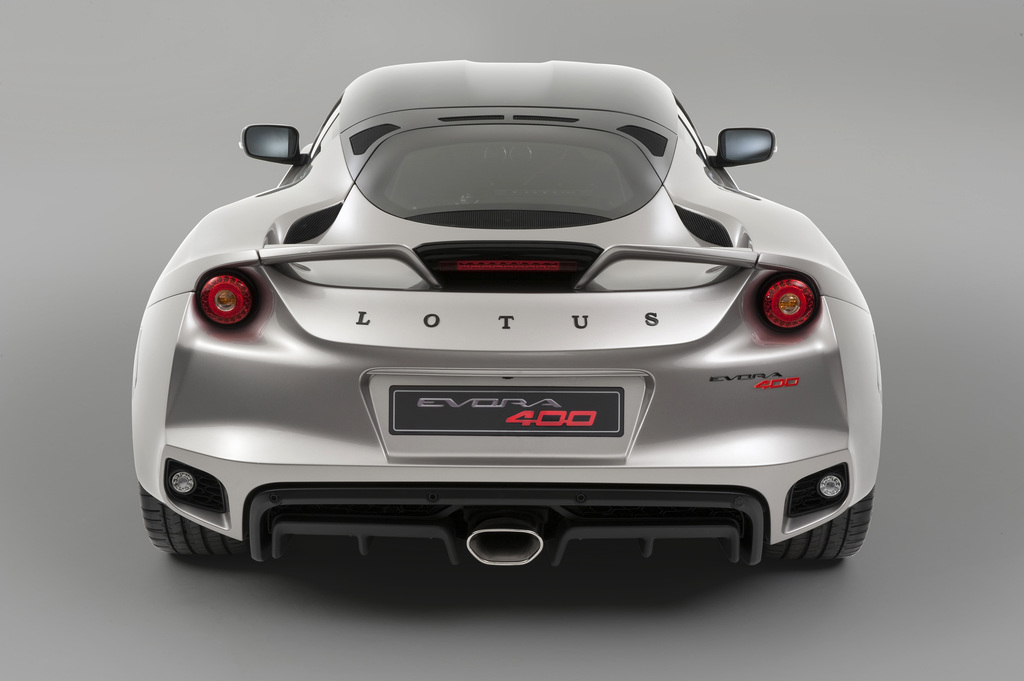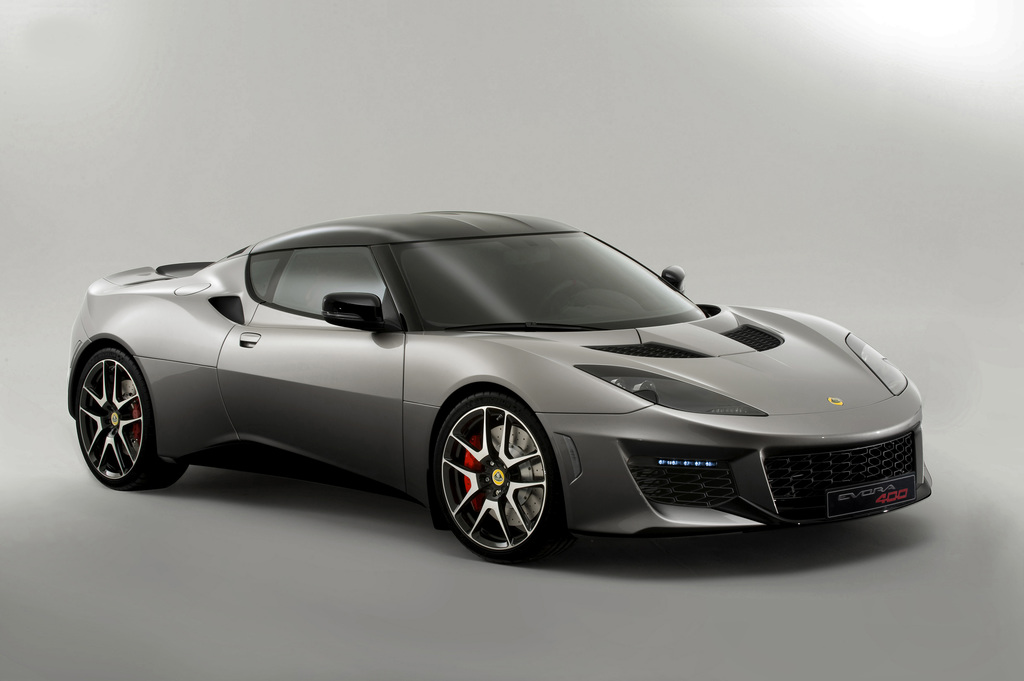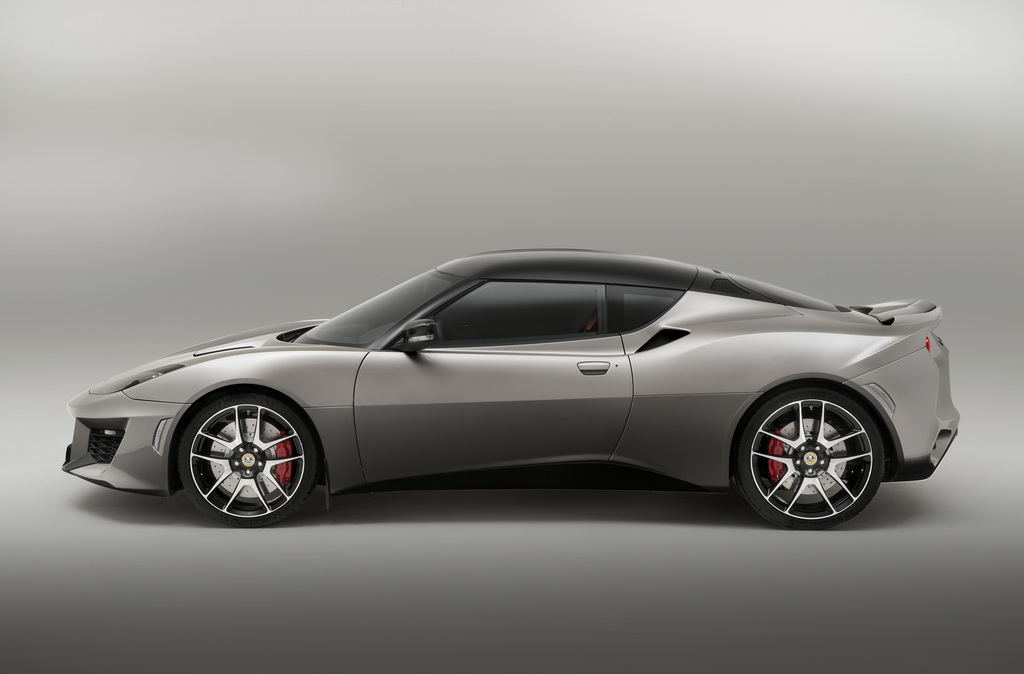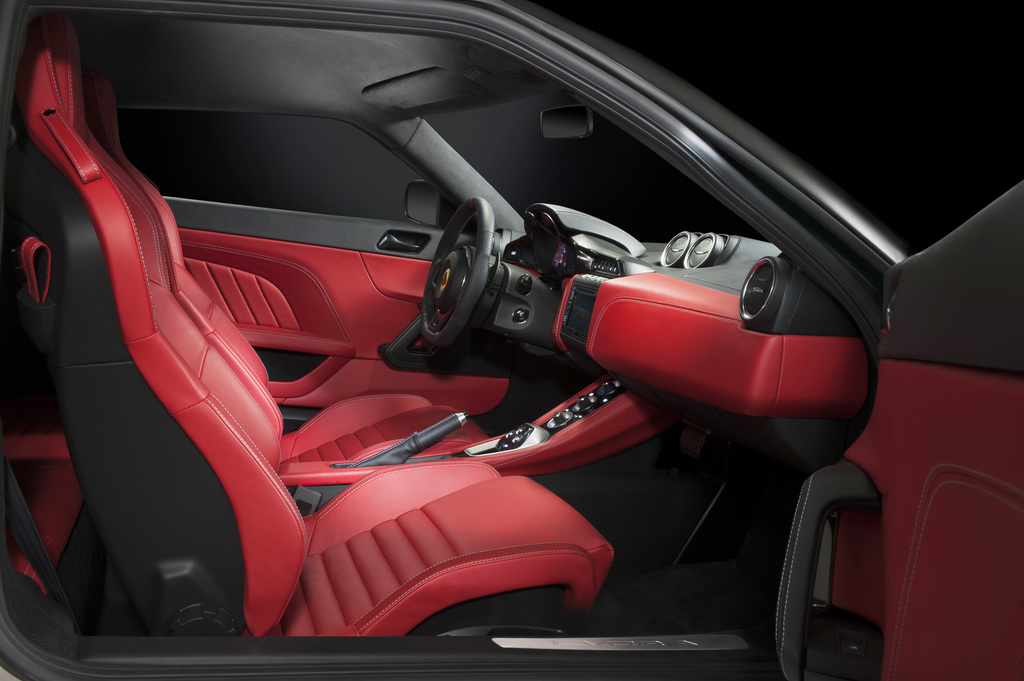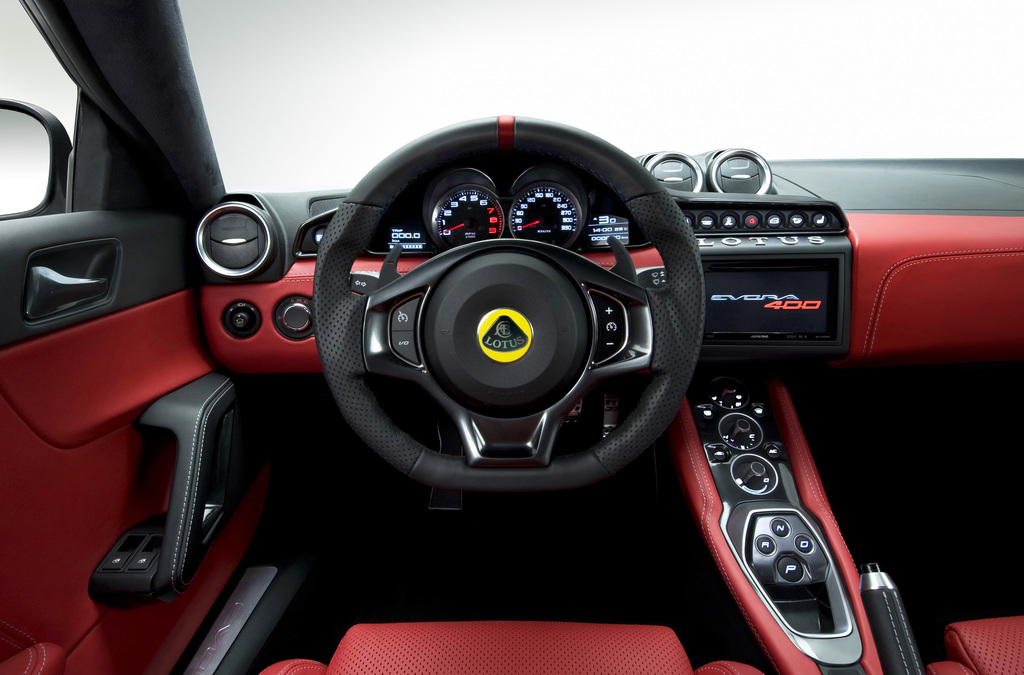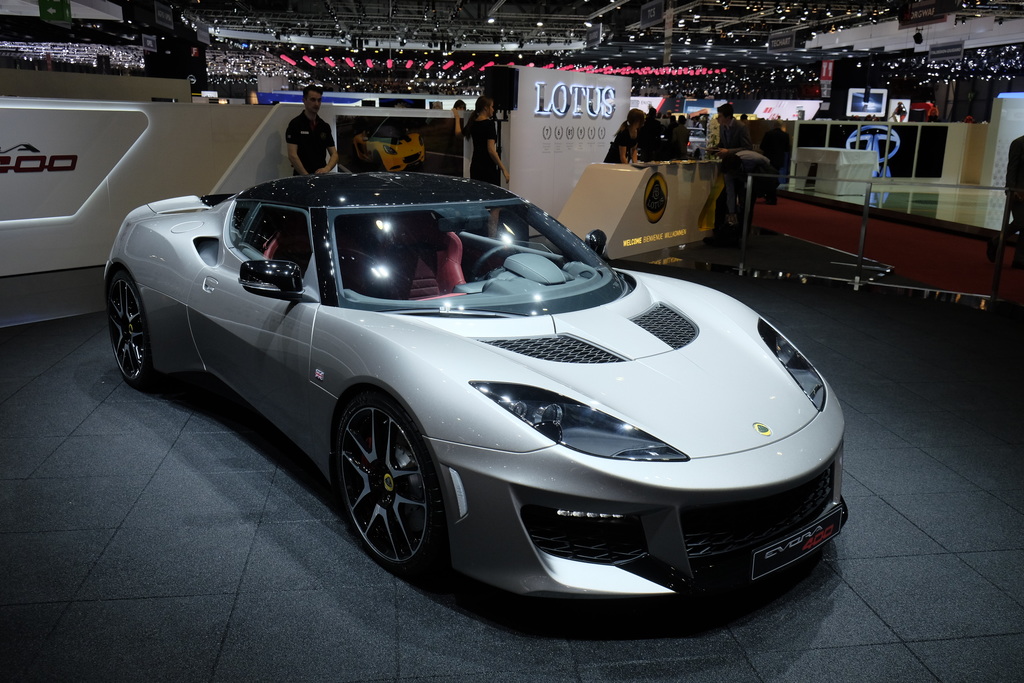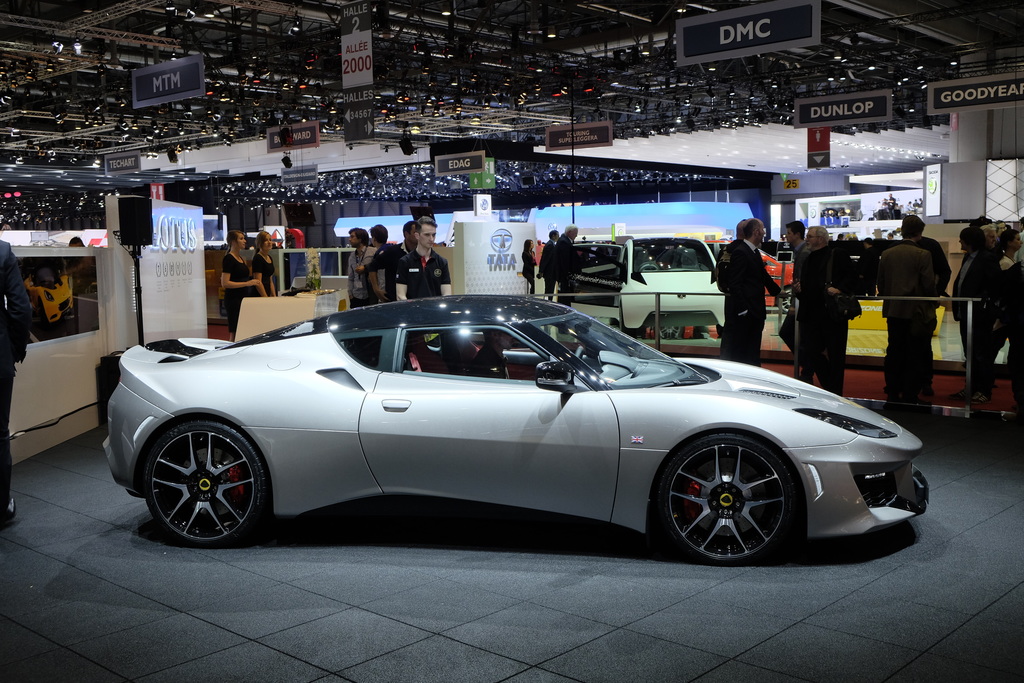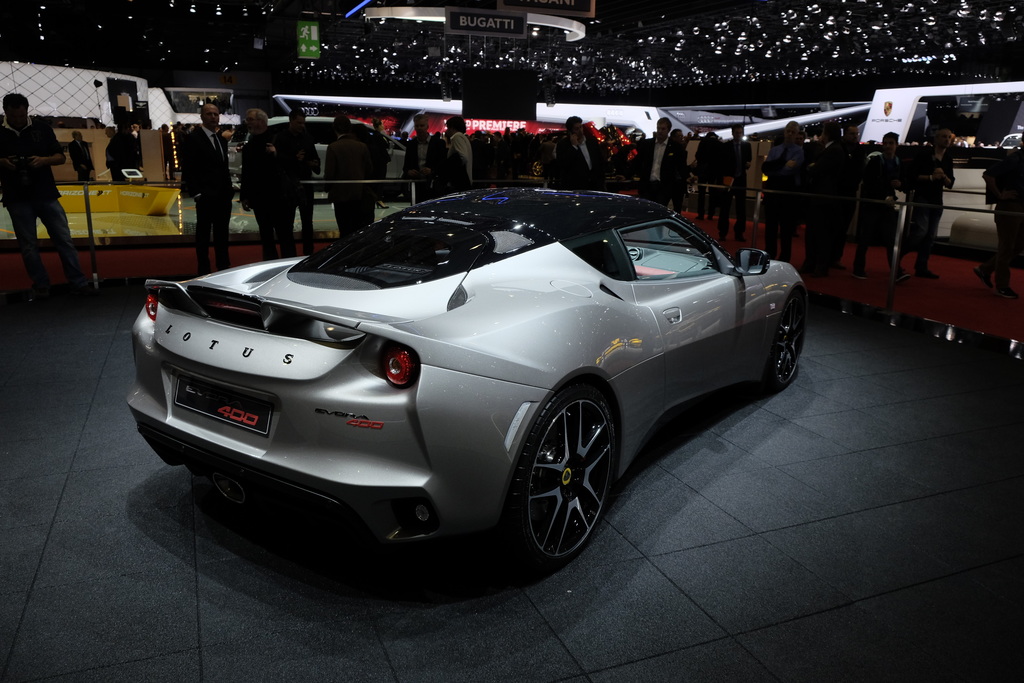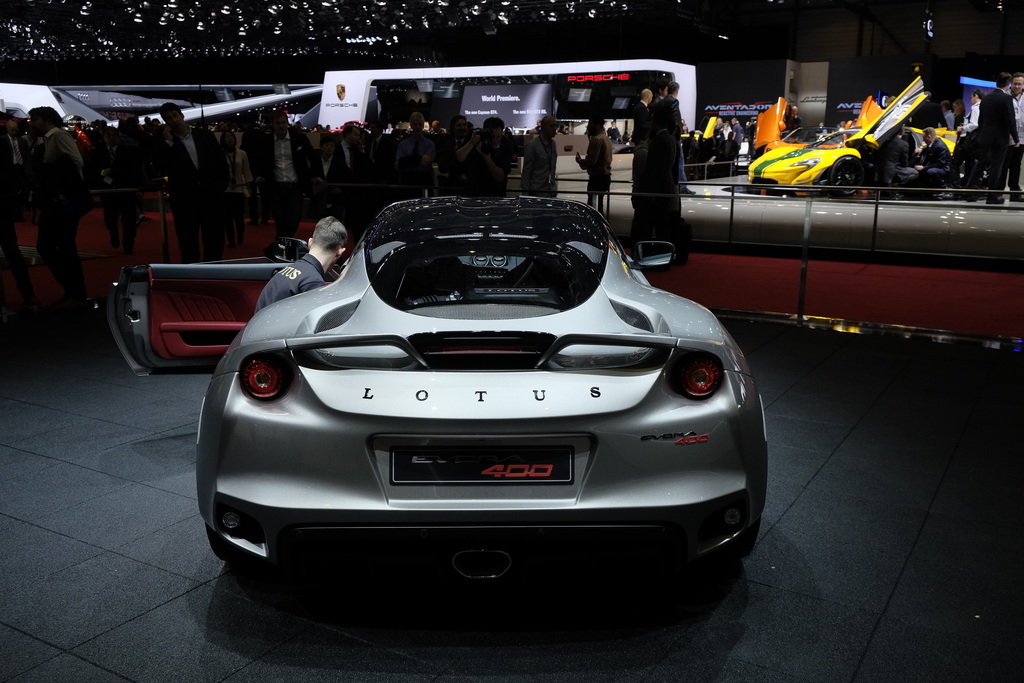2015 Lotus Evora 400
The new Lotus Evora 400 is powered by a 3.5-litre V6 engine but with a new supercharger,water-to-air charge-cooler and engine management system. Its power output has increased by 16% from 345 hp (350 PS / 257 kW) to 400 hp (406 PS/ 298 kW). Torque has increased from400 Nm / 295 lbs ft to 410 Nm / 302 lbs ft with maximum torque available from 3500 rpm to 6500rpm.
The power increase of 55 hp comes from supercharger enhancements (volumetric capacity has increased from 1.32 L/rpm to 1.74 L/rpm), the application of a new charge-cooler and engine management upgrades.
While meeting legal pass-by and race track requirements for NVH, sonic changes have been made to the post-cat exhaust system. It features revised muffler internals and a switch that can be driver activated, which allows the exhaust to flow more freely, reducing back pressure under higher engine loads and where conditions allow. A by-product is an unique supercar sound track through the three-inches wider, central exiting exhaust pipe.
New engine mounts, which are 5.6 kg lighter than in the previous Lotus Evora, and a revised rear subframe have enabled better engine control and improved vehicle dynamics.
A number of manual gearbox enhancements have greatly improved shift quality including a new clutch disc and a low inertia flywheel that ensure swift and tactile gear changes. For the automatic transmission option, a new shift strategy has been developed, with gear changes made using the lightweight aluminium paddles mounted to the steering wheel. For the manual version, a Torsen-type limited slip differential (LSD) has been fitted as standard to the rear axle, which gives a more involving drive and better traction, to produce better lap times.
Related: Lotus Race Cars / Current Lotus Models / All Lotus Cars / Latest Lotus News
Pictures
Specs & Performance
| type | Series Production Car |
| released at | 2015 Geneva Motor Show |
| built at | Hethel, England |
| body stylist | Steven Crijns, Russel Carr |
| engineers | Richard Rackham |
| engine | Toyota 2GR-FE V6 |
| position | Mid, Transverse |
| aspiration | Supercharger |
| block material | Aluminum Alloy |
| valvetrain | Chain-Driven DOHC, 4 Valves per Cyl w/dual VVTi |
| fuel feed | Electronic Injection |
| displacement | 3456 cc / 210.90 in³ |
| bore | 94 mm / 3.7 in |
| stroke | 83 mm / 3.27 in |
| compression | 10.8:1 |
| power | 298 kw / 400 bhp @ 7000 rpm |
| specific output | 115.74 bhp per litre |
| bhp/weight | 282.69 bhp per tonne |
| torque | 410 nm / 302.4 ft lbs @ 4500 rpm |
| redline | 7000 |
| body / frame | Plastic Body over Bonded & Extruded Aluminium Chassis w/Front and Rear Aluminum Subframes |
| driven wheels | RWD w/TCS |
| wheel type | Forged Aluminium Alloy |
| front tires | Michelin Pilot Super Sport 235/35×19 91Y |
| rear tires | Michelin Pilot Super Sport 285/30×20 99Y |
| front brakes | Vented & Drilled Discs w/Lotus AP Racing 4-Piston Calipers |
| f brake size | 32 x 370 mm / 1.26 x 14.57 in |
| rear brakes | Vented & Drilled Discs w/Lotus AP Racing 4-Piston Calipers |
| r brake size | 32 x 350 mm / 1.26 x 13.78 in |
| steering | TRW Rack & Pinion w/Hydraulic Assist |
| f suspension | Forged Aluminum Wishbones w/Bilstein Dampers, Eibach Springs |
| r suspension | Forged Aluminum Wishbones w/Bilstein Dampers, Eibach Springs |
| curb weight | 1415 kg / 3120 lbs |
| weight distro | 38 % / 62 % |
| wheelbase | 2575 mm / 101.4 in |
| front track | 1567 mm / 61.7 in |
| rear track | 1574 mm / 62 in |
| length | 4340 mm / 170.9 in |
| width | 1849 mm / 72.8 in |
| height | 1221 mm / 48.1 in |
| transmission | Toyota 6-Speed Manual |
| gear ratios | 3.54:1, 1.91:1, 1.41:1, 1.09:1, 0.97:1, 0.86:1 |
| top speed | ~299.27 kph / 186 mph |
| drag | 0.337 Cd |
| urban fuel econ eu | 14.5 L/100 km or 16.22 mpg-us |
| extra urban fuel econ eu | 7.4 L/100 km or 31.79 mpg-us |
| combined fuel econ eu | 10.0 L/100 km or 23.52 mpg-us |
| emission | 225 g/km |
| fuel capacity | 60 litres or 15.84 gal. |


